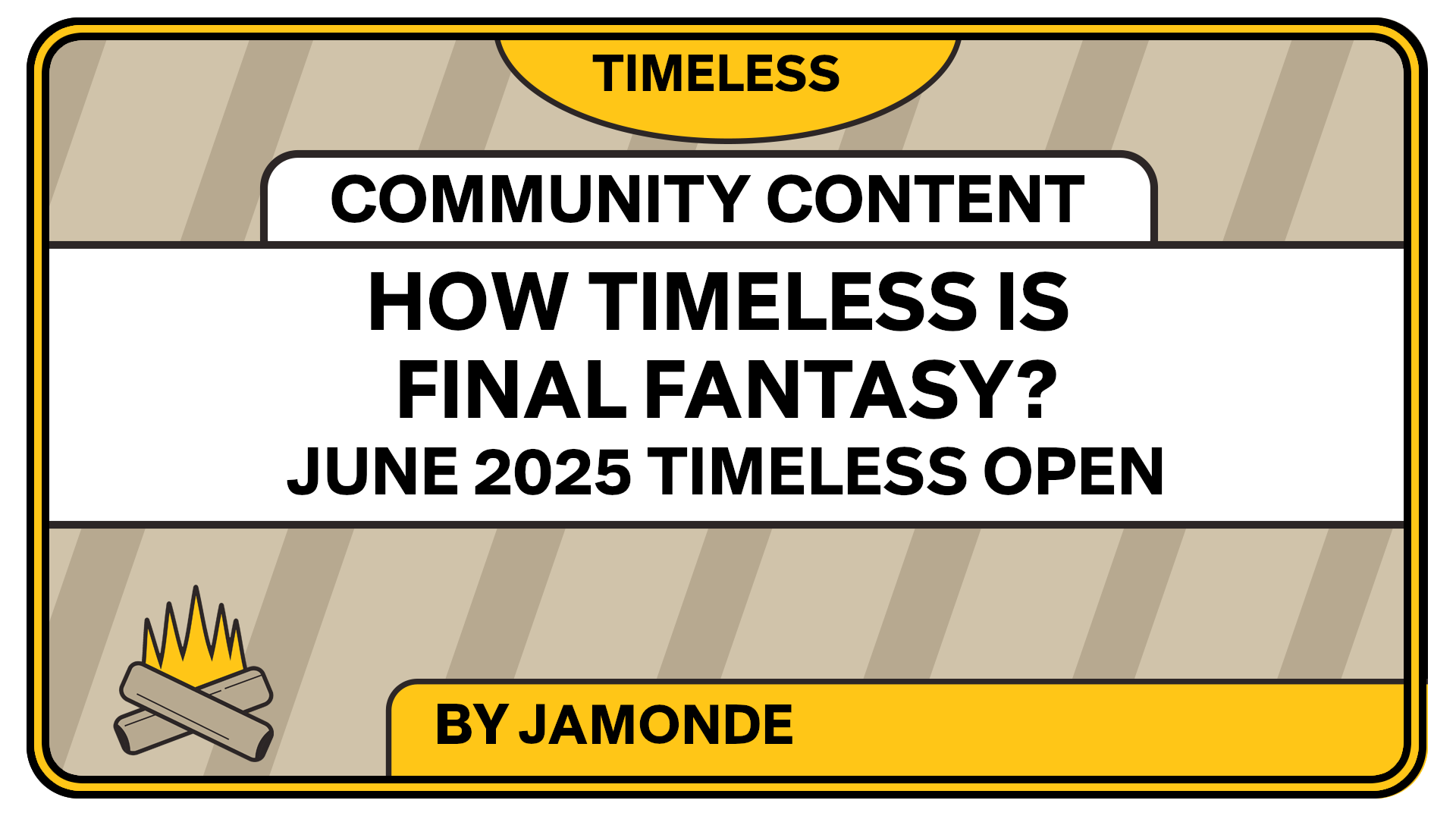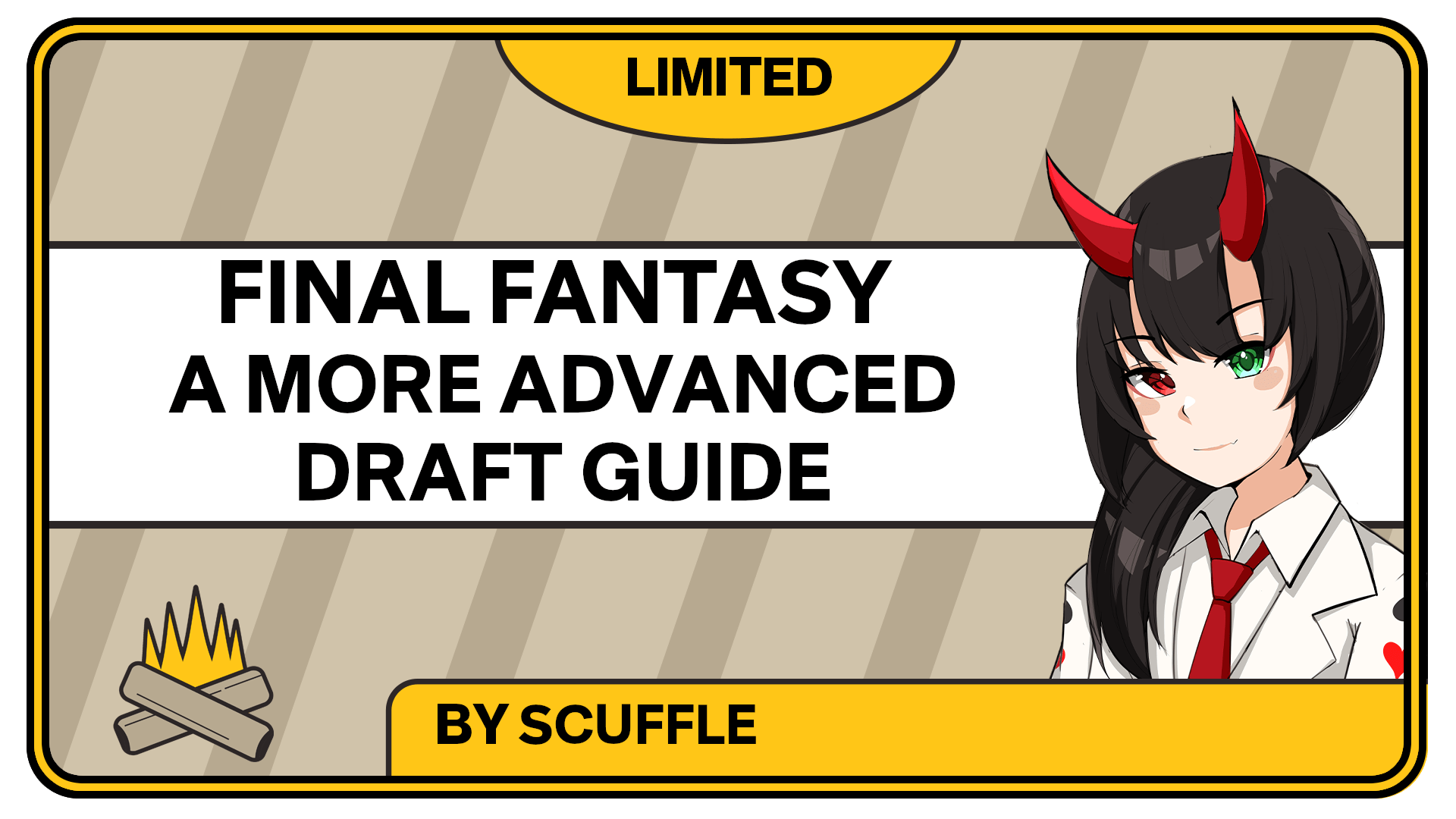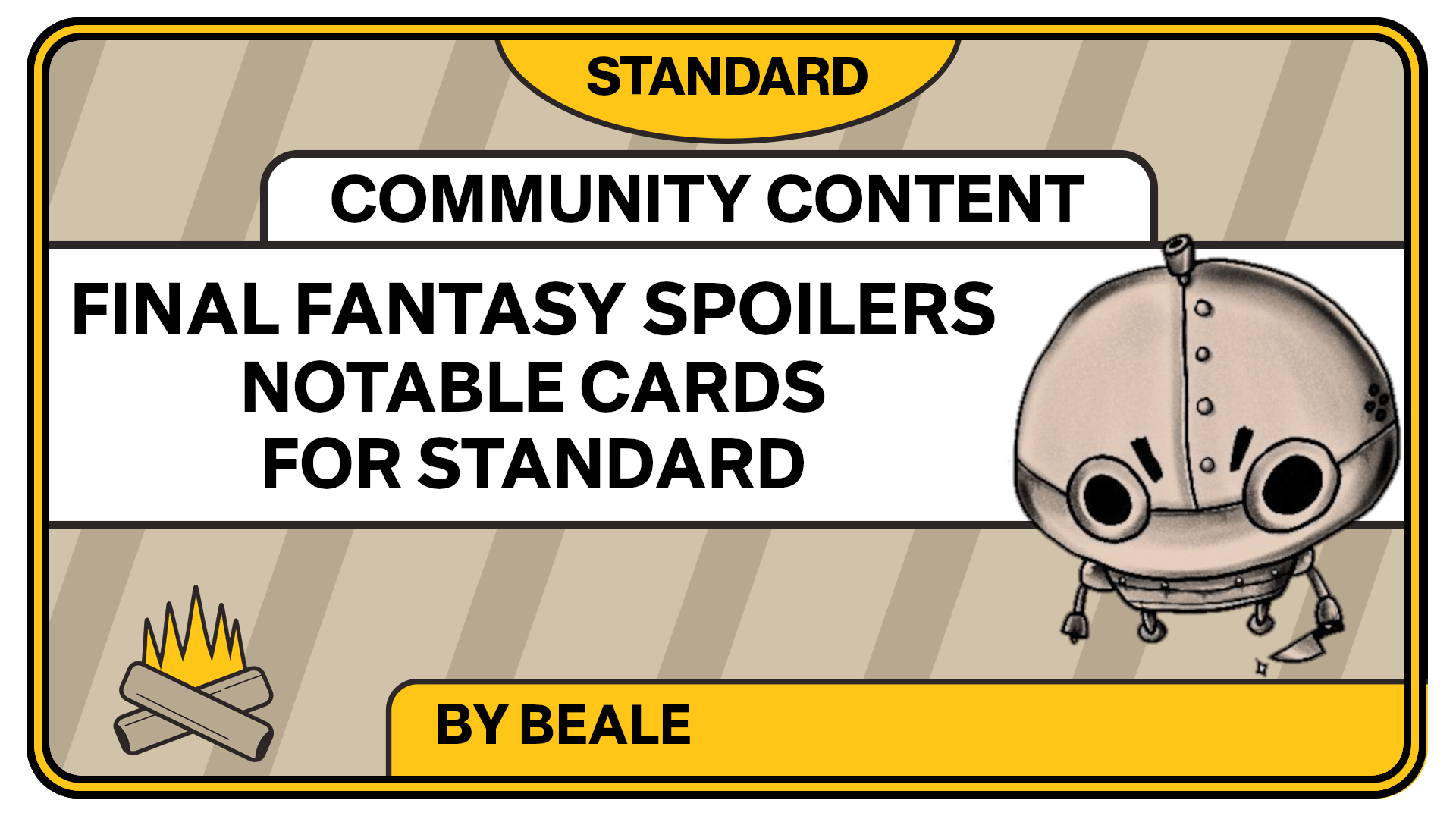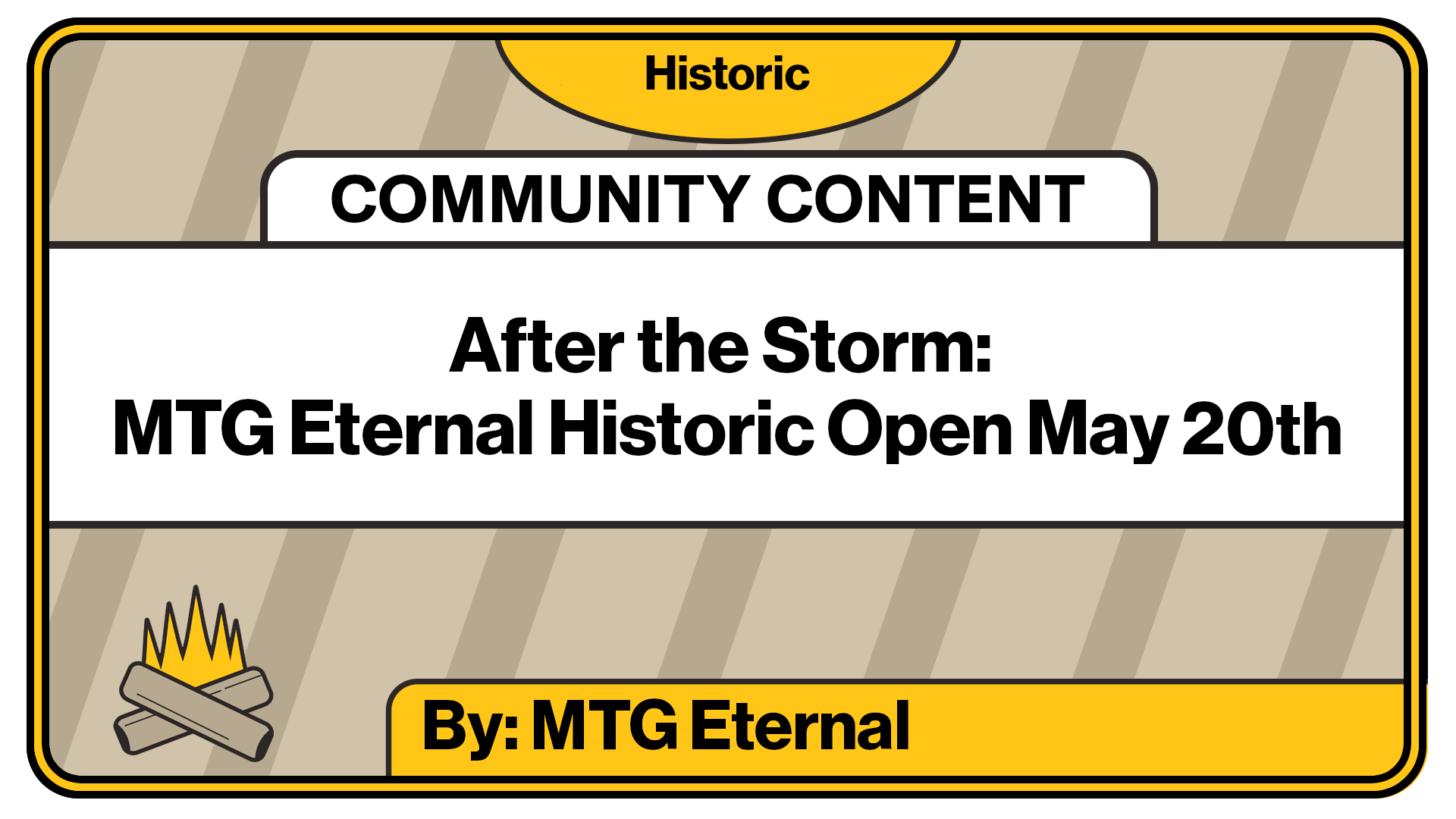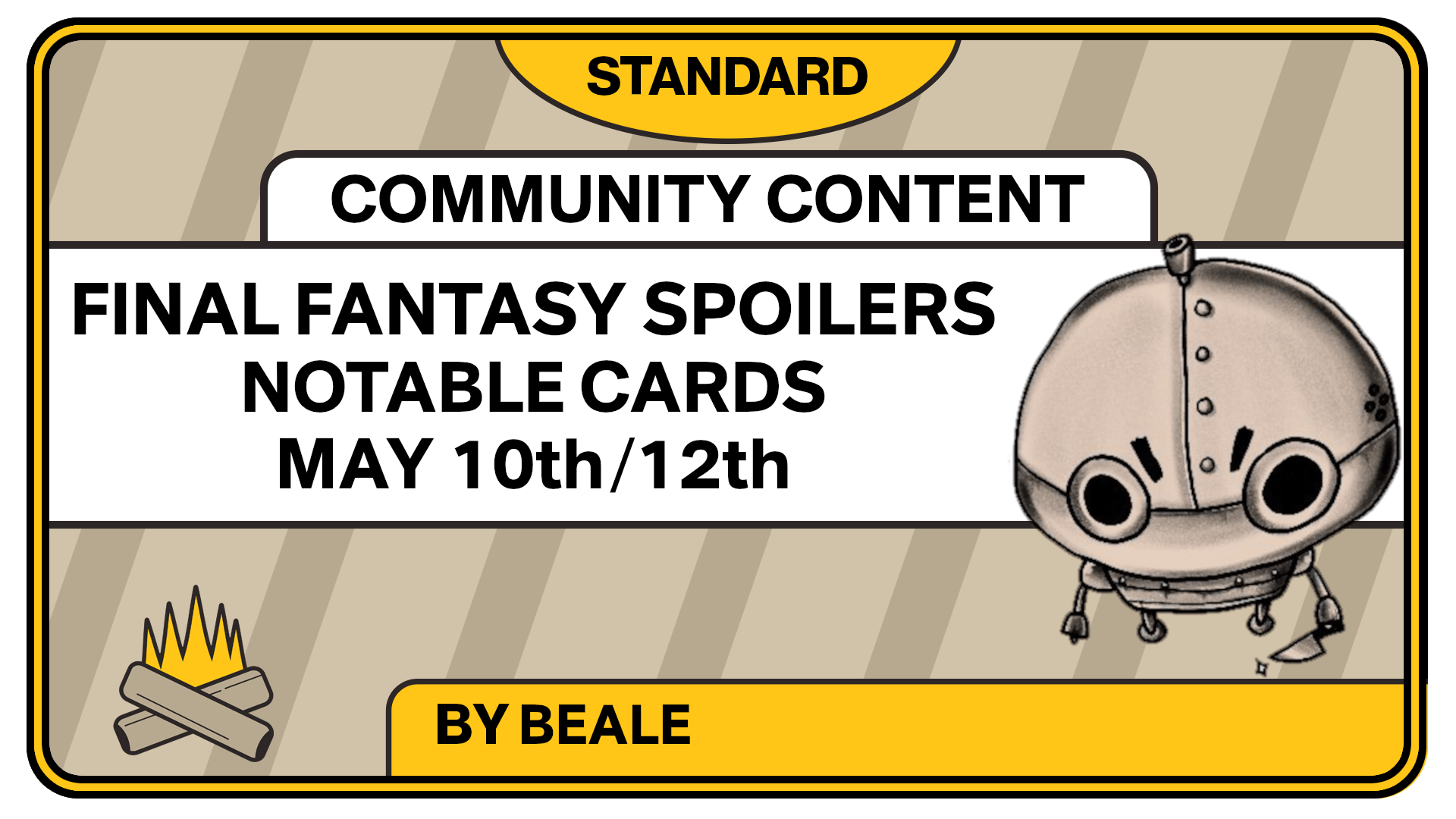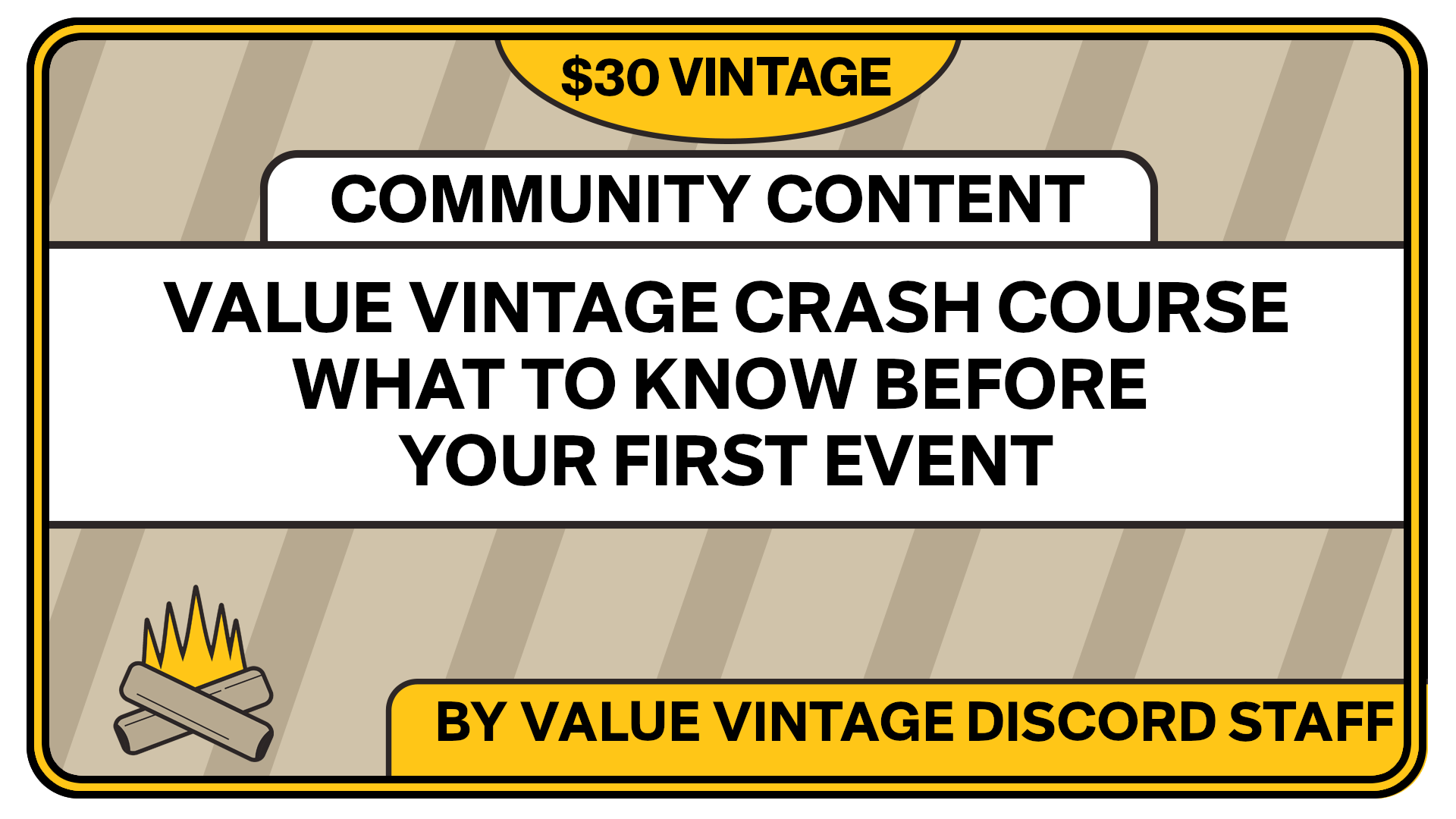We have arrived at Thunder Junction, and this plane is wildly complex and dynamic.
Outlaws of Thunder Junction feels like the next step in the evolution of Magic: The Gathering, where the set design has finally caught up to the power level of pushed Rares and synergy can match pace with FIRE Design on singular cards. OTJ is the Wild West not just in setting, but in complexity and all the different minutiae available for discovery.
YIPPIE KAYAK OTHER BUCKETS, let’s start with…
STATS!
Outlaws of Thunder Junction has, at the Common and Uncommon rarities:
- 45 Removal spells (The most ever, MKM had 27 and LCI had 24. There’s also an additional 29 at Rare or Mythic!)
- 18 Combat Tricks
- 15 Deserts
- 0 Unplayable Cards
- 7 Sources of Colorless Mana FIxing
- 106 Creatures (or things that act like creatures)
- 16 of which have Flying (six fewer than MKM)
- 7 with Reach (one more than LCI)
- 3 True Criminals (creatures that repeatedly commit crimes on demand)
- 17 Mounts with Saddle (nice)
- 69 Outlaws (nice)
- +17 Outlaw tokens
The Toughnesses in the set are as follows:
- 13 creatures with 1 Toughness
- 53 with 2
- 40 with 3
- 32 with 4
- 16 with 5
- 1 with 6
- 3 with 7
- 0 with 8 or more Toughness
So that means:
- The four cards that deal 1 damage kill 9% of creatures
- The two 2-Damage Removal spells kill 42%
- The one 3-Damage spells kill 67%
- The three 4-Damage spells kill 87%
- The one 5-Damage spell kills 97%
- The one 6-Damage spell kills 98%
In addition to those 9 “Deal some Damage” removal spells, there are plenty of other ways to deal with creatures. Aided by the one-per-pack Breaking News Card – 18/20 of which answer creatures – there are:
- 8 Unconditional Removal Spells
- 5 other Conditional Removal Spells
- 4 “Oblivion Ring” style exile effects
- 1 Disabling Enchantment
- 1 Creature Tapper
- 3 Counter Spells
- 4 Tempo Plays
- 1 Act of Treason Effect
- 1 Tuck Effect
- 4 Creatures that Kill other Creatures
- 4 Bite Effects
- 2 Fight Effects
- 2 Board Sweepers
Remember, all of these effects are just at the Common and Uncommon rarity, Rares and Mythics not included! So make sure to keep these in mind and refer back to them as you Crime.
The Shape of the Format
For this More Advanced Draft primer, I’m assuming you already know the Outlaws of Thunder Junction basics and mechanics. For a technical description of the OTJ mechanics, check out the WotC announcement and he OTJ draft archetypes are billed by Wizards of the Coast as follows:
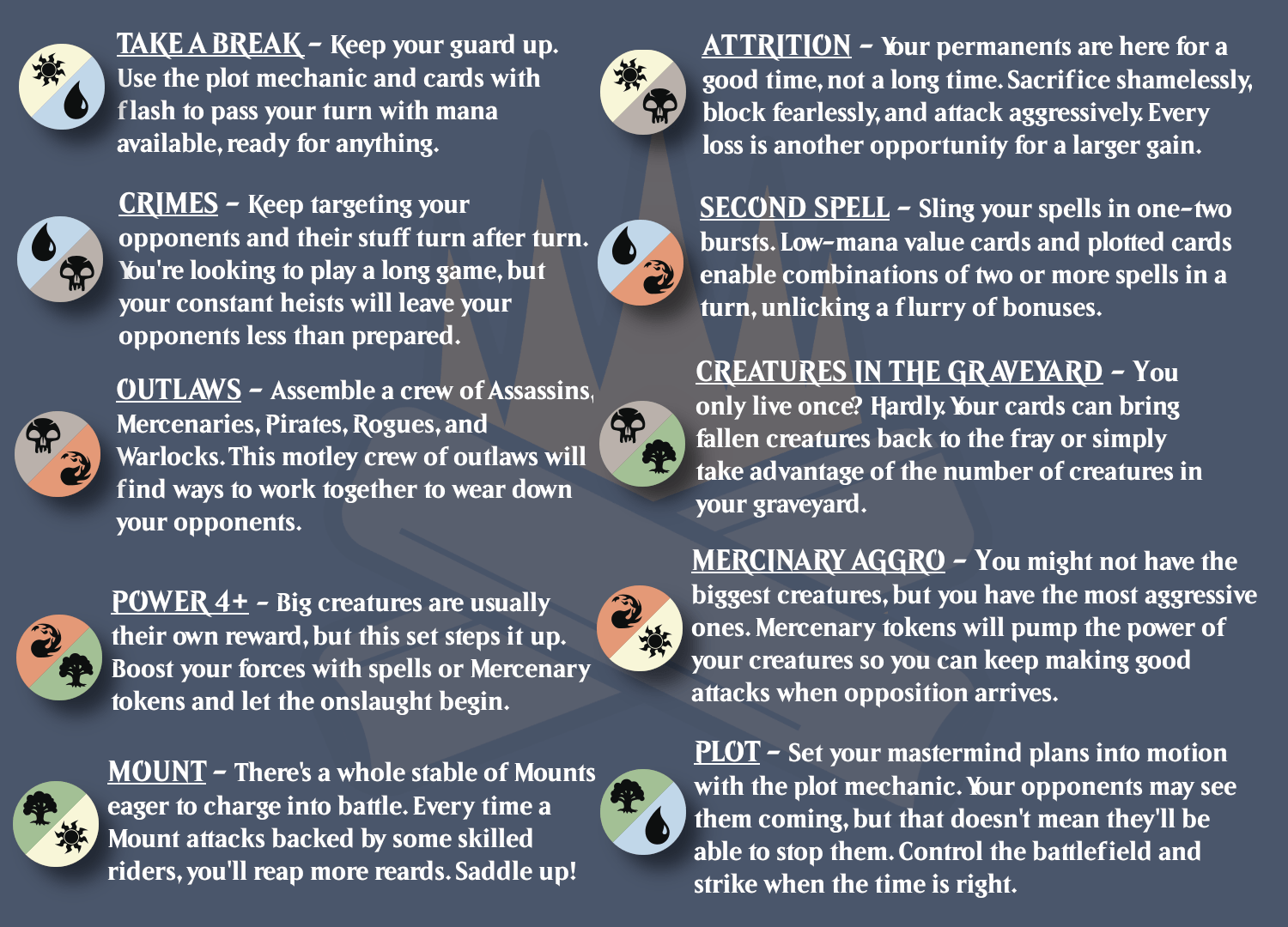
Now for the good stuff. No single aspect of Drafting or playing Sealed in Outlaws of Thunder Junction is entirely new, but as a whole the set has five defining properties:
-Every card is good
–Synergy helps to Accelerate the Value Race
-Strong, Plentiful, and Delayed Rares
-Strong and Plentiful, Removal
-Color and Archetype Fluidity
1.Every Card is Good
With the exception of a few situational rares, every single card in Outlaws of Thunder junction is strong by traditional drafting standards. Not many cards are better than the strongest cards, but most OTJ cards are at a similarly high power level and therefore playable. Extremely situational cards are minimal and every single creature has an ability, or is sized above rate for its cost (a two-mana creature is a 2/2 or larger). The jump in the average card’s power level is relatively unique. When every card is strong, none of them are.
2. Synergy helps to Accelerate the Value Race
You usually strive for synergy in a draft deck, but Thunder Junction is chock full of little ways to get more out of every card. Let’s look at an example.
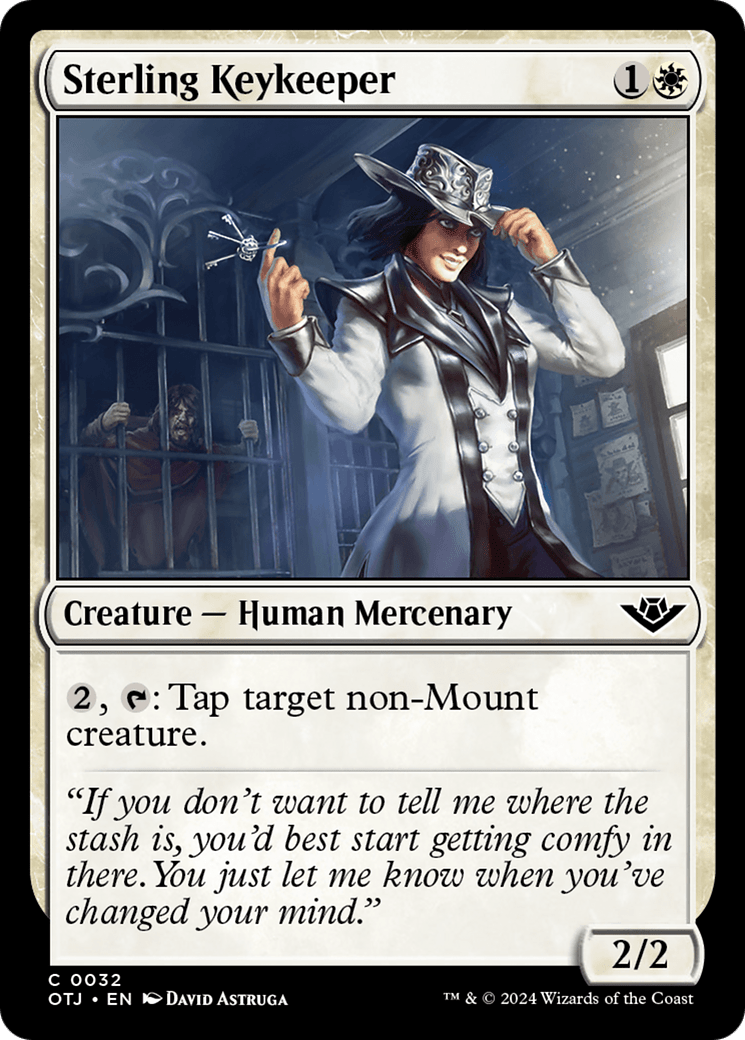
Sterling Keykeeper is a cool and unassuming two-mana 2/2, exactly the stats you’d expect on a common two-mana draftable creature.
How though, can we pull extra value out of this keeper of the keys?
Does your deck care about outlaws? Do you need to survive key turns?
Does your deck care about crimes? Do you need a way to commit crimes on your opponent’s turn consistently? Will you be milling yourself to put creatures into your graveyard, and need interaction that is a creature? Do you need to cast more spells each turn? Do you need something to do with your mana after you pass?
OTJ is a format where card type, creature type, the ability to target, the number of spells cast in a turn, and timing of effects and abilities are all opportunities to generate more value or tempo. A deck full of “good cards” will lose to a deck that casts a 2/2 that deals one damage to the opponent when it enters or dies and taps an attacker to put a +1/+1 counter on a different creature. As you draft, try to keep an eye out for which card types you need to pick more highly, and which creatures actually deserve space. If you need a signpost early in the pack…
3. The Rares Are Plentiful, Strong, and Delayed
There are more Rares than usual between The List (The Big Score/Guest Cards), Breaking News (1 per pack), wildcard slots, and the normal Rare per pack; you can open a pack with 4 or more rares and mythics. Here’s a complete breakdown of the OTJ play boosters. This feels like a surface problem, but nearly every “bomb” rare needs to stick around for a few turns to take over the game. Of the 165 available Rare and Mythic Rare cards available in OTJ play boosters, only four will always present problematic value up front (Bonny Pall, Roxanne, Annie, and Oko). There are no hexproof creatures that win the game alone or unbeatable turn five plays, and most rares require specific decks or synergies to feel unfair. The bombs are powerful but on a delay, with the set mechanics of Criminals, Saddle, and Plotted Bombs all operating with a turn available to answer them.
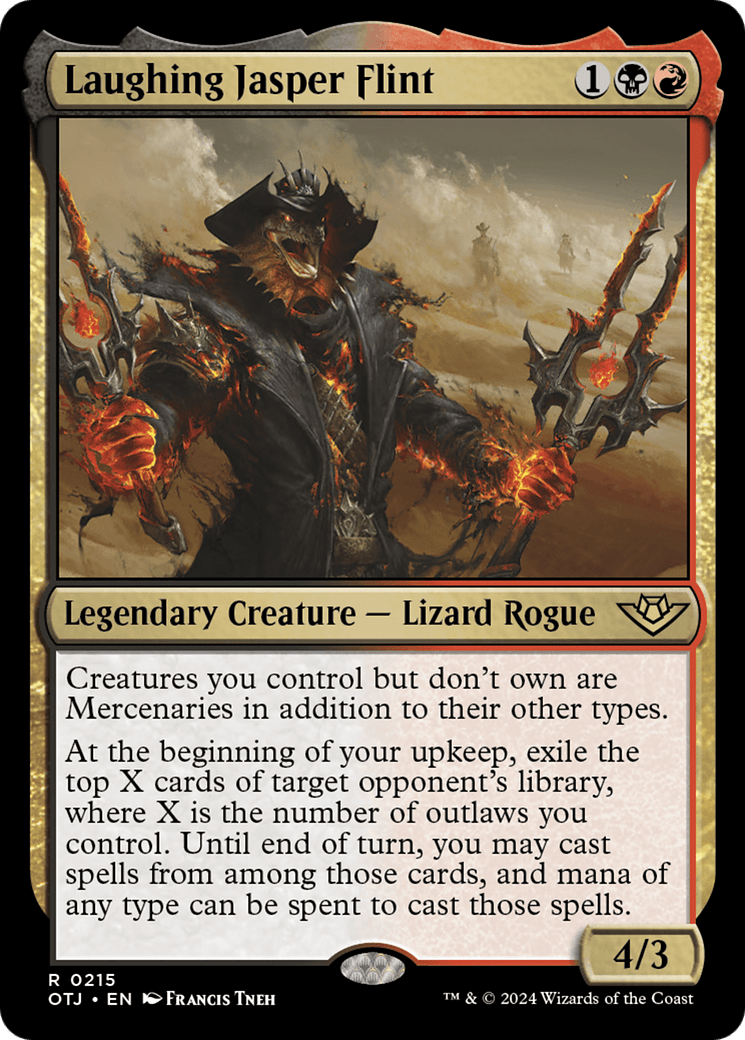
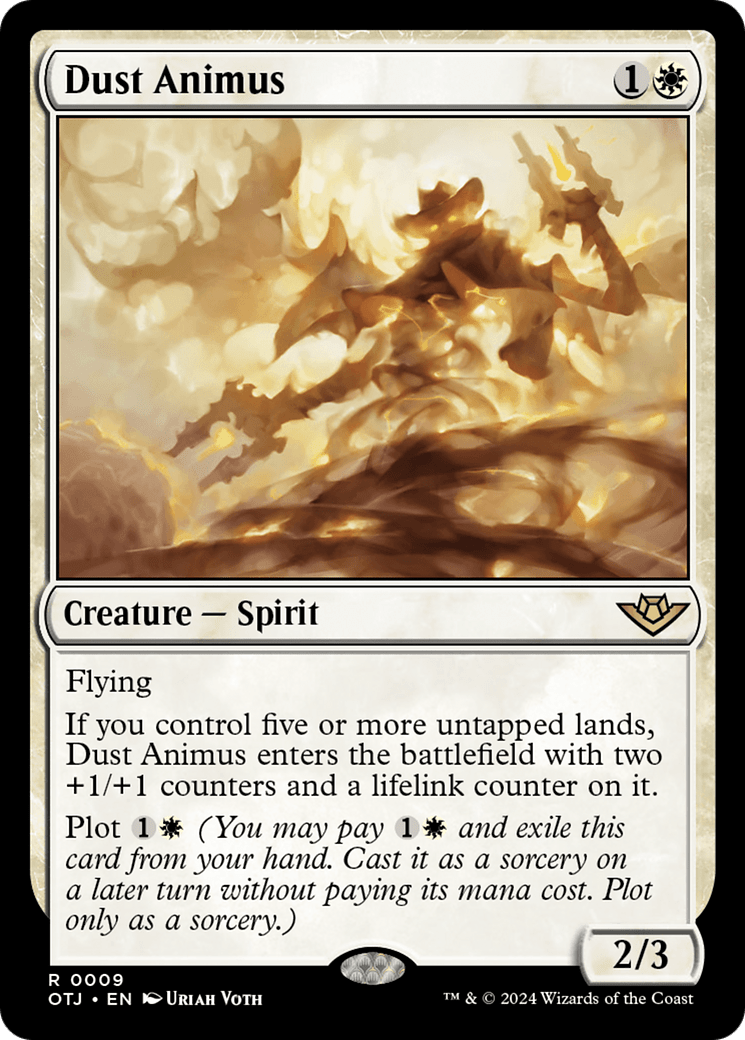
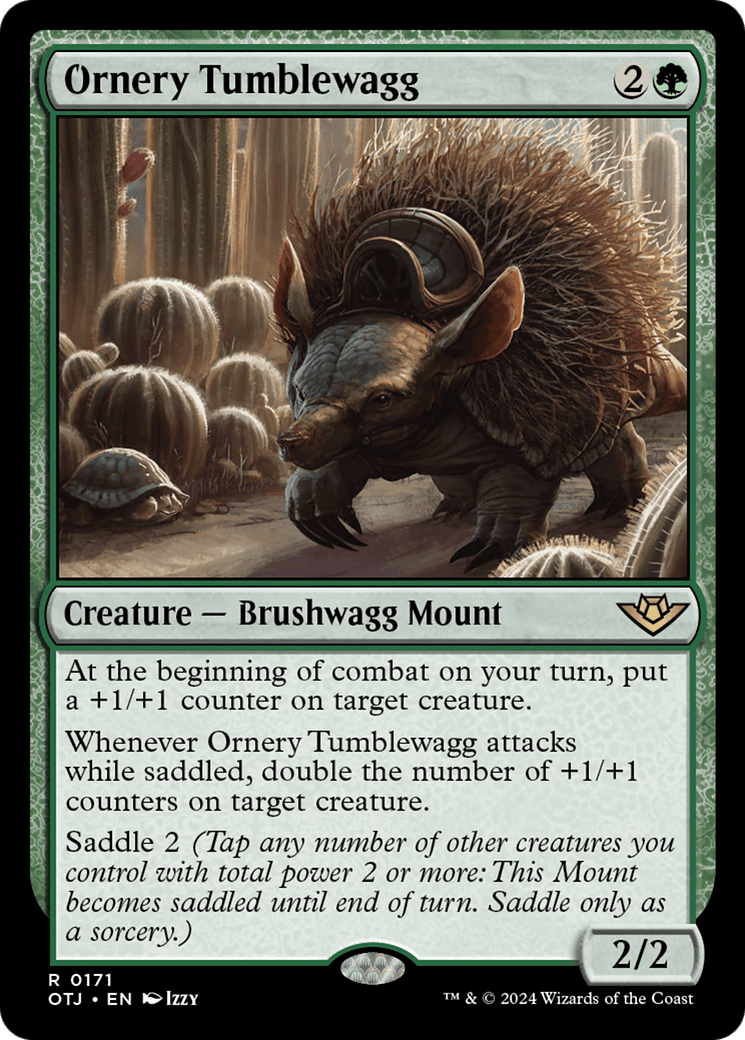
The set’s main mechanics of Crime, Saddle, and Plot all require some investment of time, mana, or other form of forethought. The Bombs are powerful but on a delay, creating time to find removal or an answer. This is fantastic design, because…
4. The Removal is also Strong and Plentiful
With an astounding 47 available removal spells at just common and uncommon and another 29 at rare or mythic, Outlaws of Thunder Junction has the most removal of any draftable set printed. For reference, MKM had 24 removal spells and LCI had 22. The Breaking News Cards present in every pack are going to kill a creature 90% of the time and otherwise interact 95% of the time, meaning that you can count on a way to kill a creature every pack. OTJ also heavily incentivizes running removal – besides the aforementioned delayed bombs, Criminals, Mounts, and many of the set’s most powerful uncommons require other creatures to operate at maximum capacity. Overall, what this means for your draft is that, while you still need removal, you can pick it up a little later than usual. Murder is strong in OTJ, but so are any of Unfortunate Accident/Consuming Ashes/Desert’s Due/Bedevil/Vanishing Verse/Anguished Unmaking/Terminal Agony/Tyrant’s Scorn/Abrupt Decay/Void Rend/Back For More/Shoot The Sheriff.
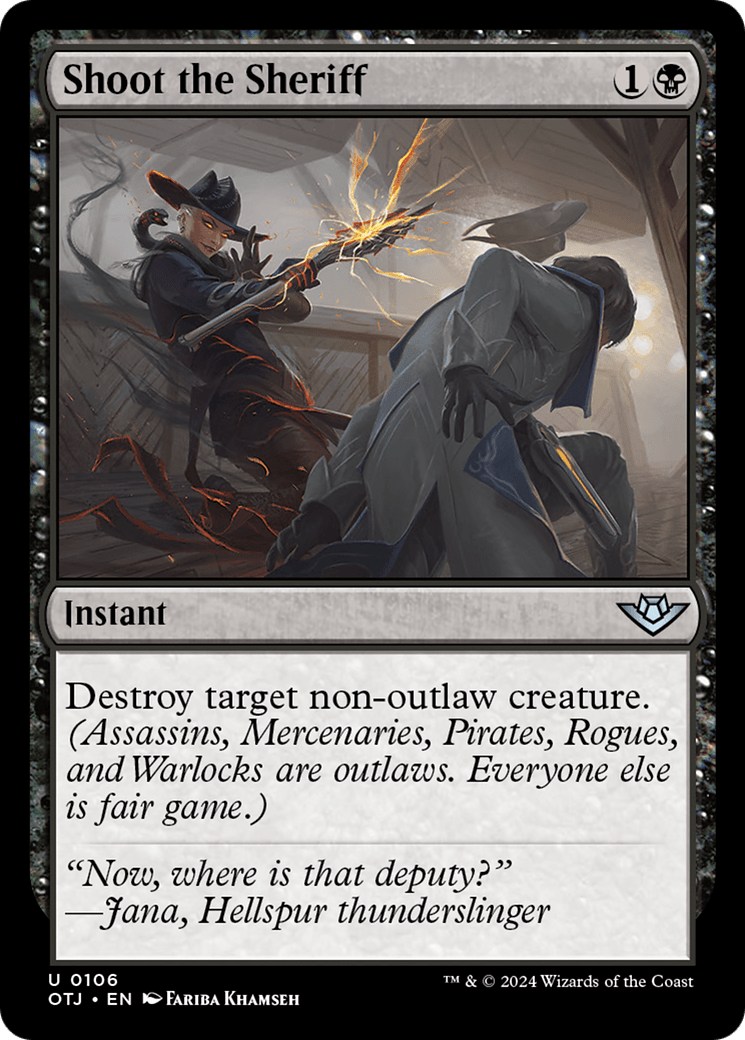
(Ok Shoot the Sheriff isn’t great)
5. Color and Archetype Fluidity
OTJ is full of powerful cards and efficient fixing.The strength of individual cards and smaller synergies give color a strange role in Thunder Junction, where the archetypes all spread out into other colors and synergy packets can be fully explored within a single color. It is entirely possible to explore the billed Blue/Red “Cast Two Spells” archetype with just blue cards in a Blue/Black deck, and splash a Kraum if you open one. Conversely, white has multiple cheap repeatable ways to trigger crimes for your Blue/Black payoffs. This archetypal fluidity throughout the colors and numerous excellent ways to fix your mana means that you can keep an eye out for missing deck pieces in other colors, and pull extra value out of niche pieces of fixing.
Navigating Your Draft
(For a full card-by-card ratings spreadsheet, check out Scuffle’s OTJ Tier List)
So we know what makes Outlaws of Thunder Junction different, let’s apply it to your draft!
Archetypal Bridging
Since all of the cards in OTJ are strong, the early pick order often comes down to how difficult a card will be to fit into your deck. There is an intense intentionality of design evident across the different colors towards flexibility, with many of the common and rare fitting into only a single archetype and many of the uncommons having multiple homes. The strongest commons end up being the ones that you always want to play in a given color, and you can often identify the open lane by watching for the places where the archetypes overlap.
Let’s take another look at OTJ’s archetypes, from the other side. These are the card synergies for which you can find support within each color:
|
Green |
Ferocious, Mounts, Gravebreak, Plot Tempo |
|
Blue |
Crimes, Twinspell, Flash, Plot Tempo |
|
Black |
Crimes, Outlaws, Aristocrats, Gravebreak |
|
Red |
Outlaws, Ferocious, Twinspell, Token Midrange (aggro is a lie) |
|
White |
Flash, Mounts, Aristocrats, Token Midrange (aggro is a lie) |
Now we have a lens for evaluating the rest of the cards in this set on a basis of flexibility. All of these archetypes can be built and supported within a single color, or have little synergies splashed in. However, some normally powerful cards require specific support, and identifying the open columns of support during your draft can be more valuable than identifying the open colors. These four black commons are each strong in two archetypes and replaceable other black decks:
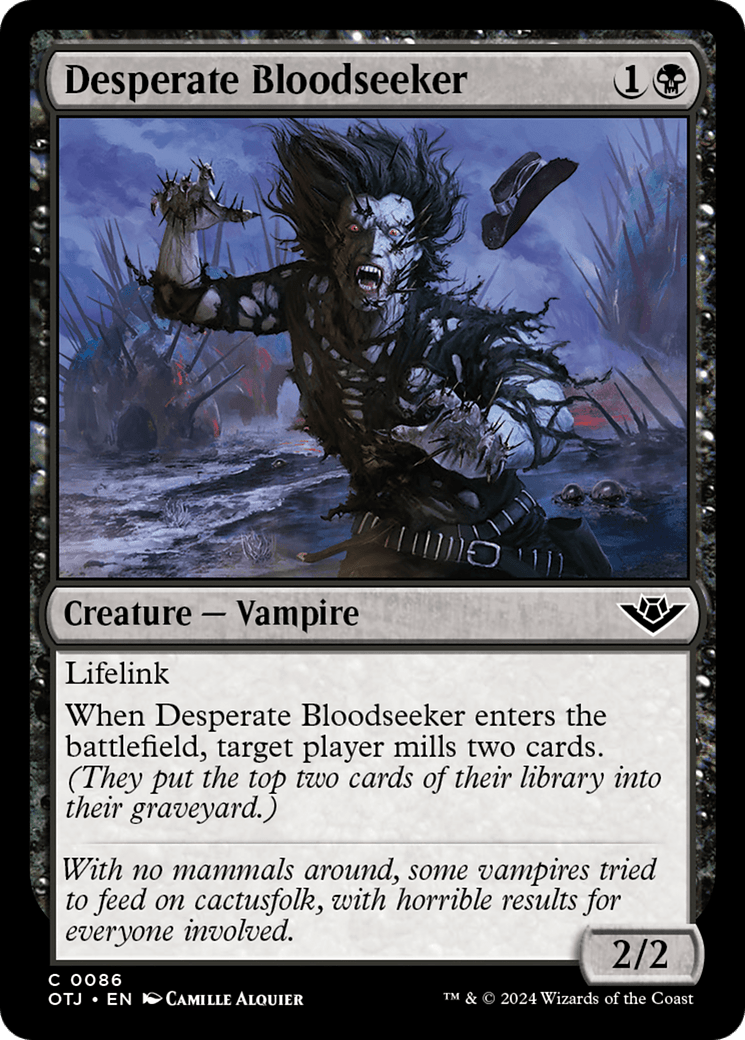
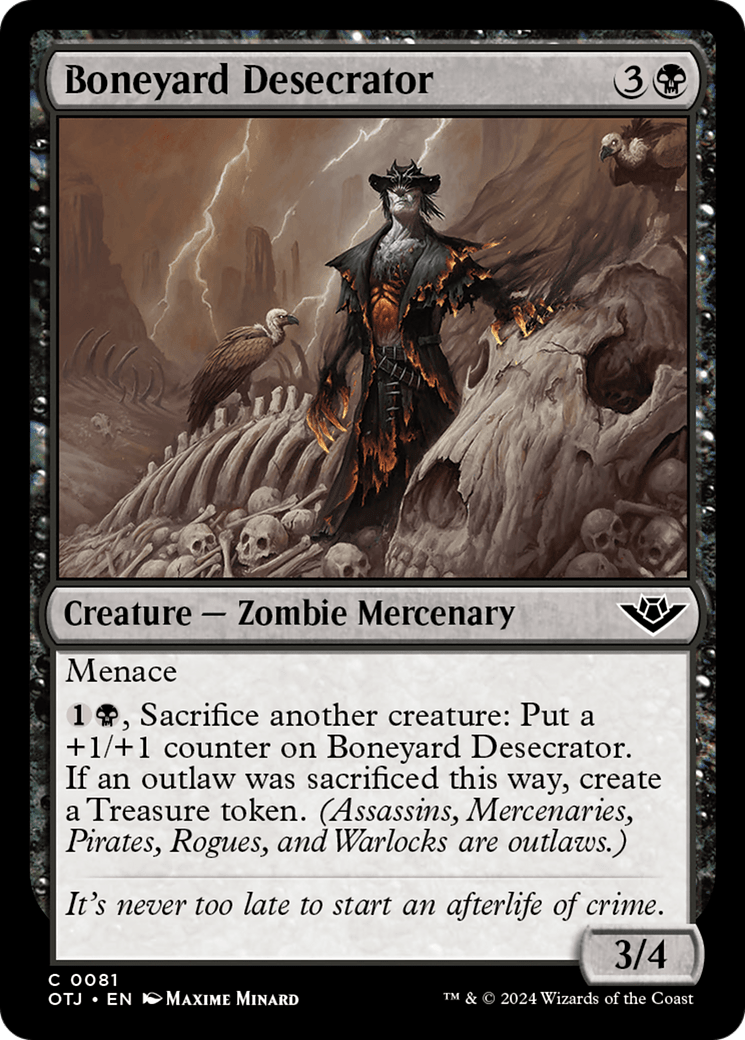
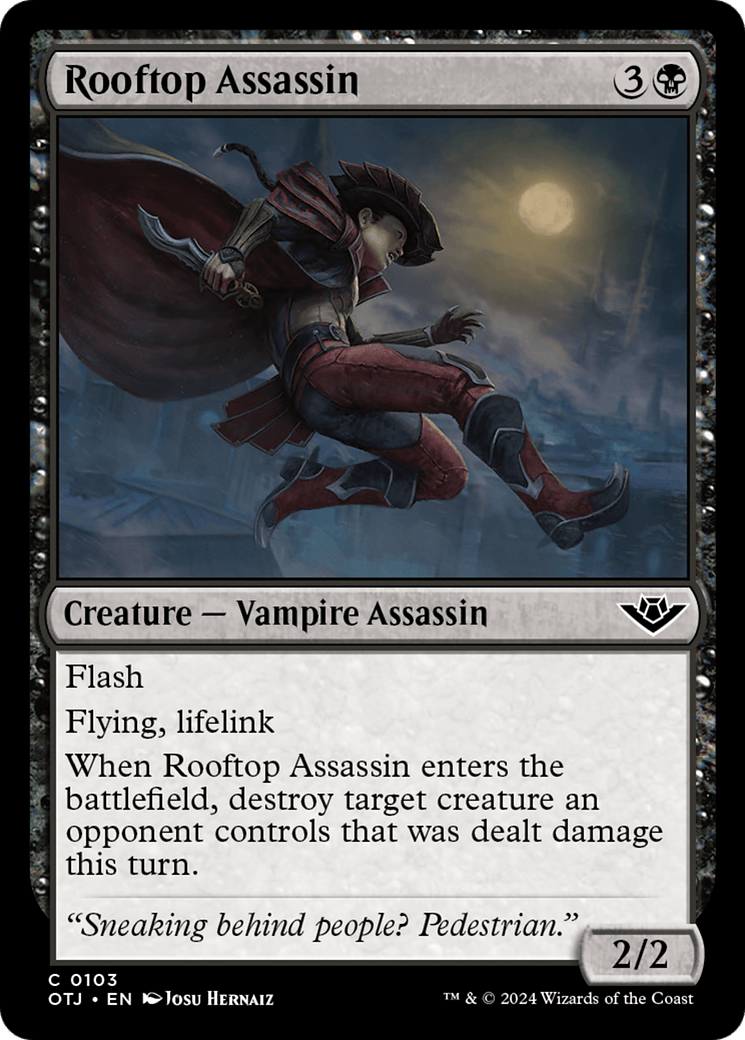
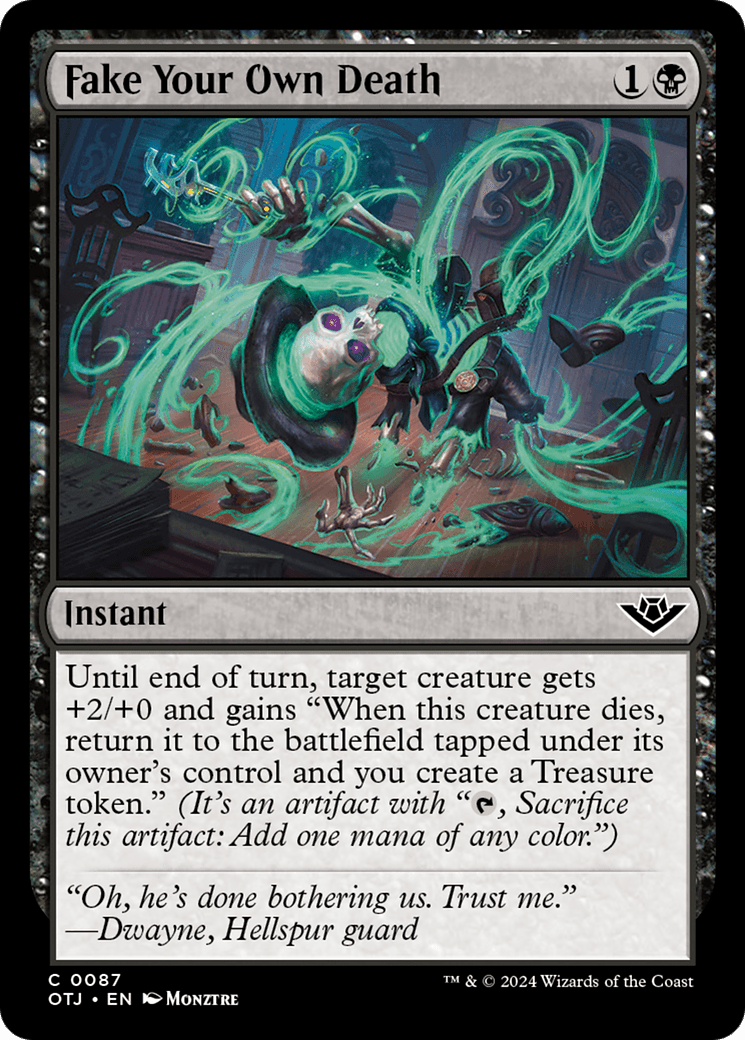
Desperate Bloodseeker is great when you want to mill yourself for Gravebreak or Crime with a creature that buys time. It’s a reasonable body everywhere else, but it’s tough to squeeze into a deck that cares about outlaws or tokens.
Boneyard Desecrator is great at eating Outlaws for Red’s treasure synergies and topping out the Aristocrats game plan, but there’s no place for it in a Green deck with stronger four-drops and it doesn’t commit any Crimes
Rooftop Assassin wants to turn Mercenary tokens into removal or commit crimes on the opponent’s turn.
Fake Your Own Death is a fine trick but performs best with Green’s strong ETBs or White’s Aristocratic control over death.
All four of these cards are reasonable in any black deck, and you can draft such that they’re supported with only black cards. However, as the format evolves, drafters will begin to pass up on cards when they can’t utilize every single aspect of them. If you start on a strong black Rare and need to choose a second color or archetype to focus on, then you can get more value out of each pick by choosing cards with overlapping bridges and noticing the overlap on which cards come back around.
Splashing
Splashing is particularly strong in OTJ, and feels different than it has in other sets. You’re a lot less likely to splash for a particular bomb than a missing piece for your deck, the fixing will often come before the splashed card due to a need for crimes or deserts. There are 5 general forms that a splash will take in Thunder Junction:
Forced
- Playing basic lands or weaker fixing to enable specific powerful bombs that make up for the weakness (ie: Oko, Thief of Crowns)
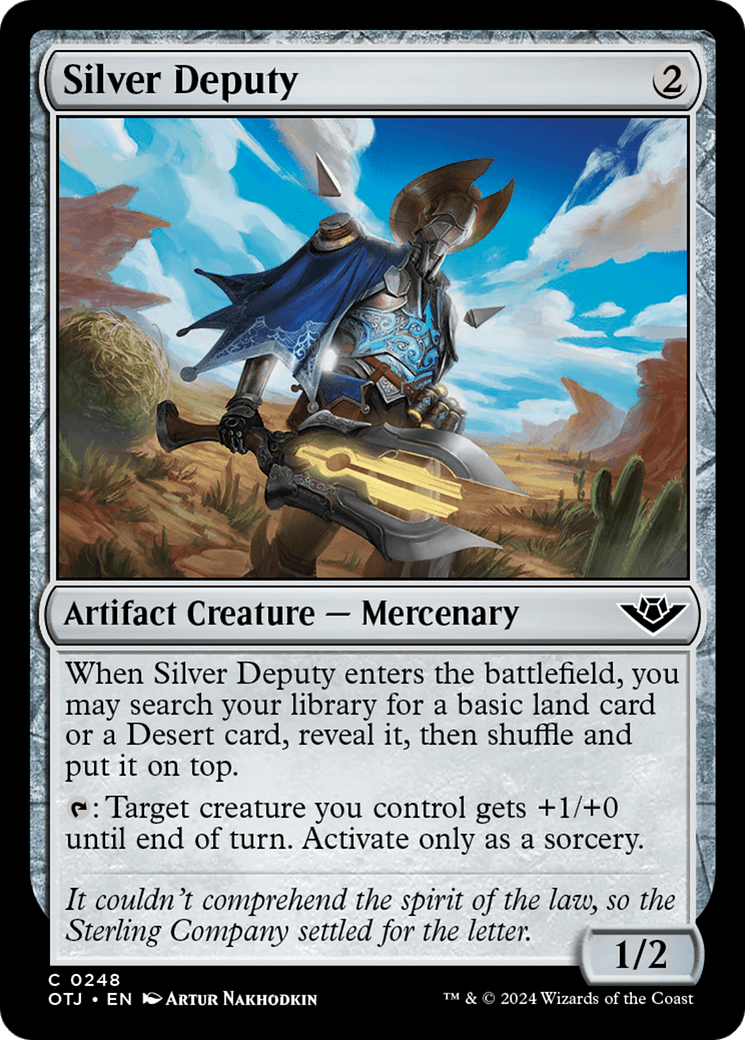
Incidental
- You might find yourself with a few Bandit’s Haul for card advantage or three extra sources of red mana to commit crimes in your Blue/Black Crime control deck, making that splash for the Kraum you were just passed in pack 3 trivial
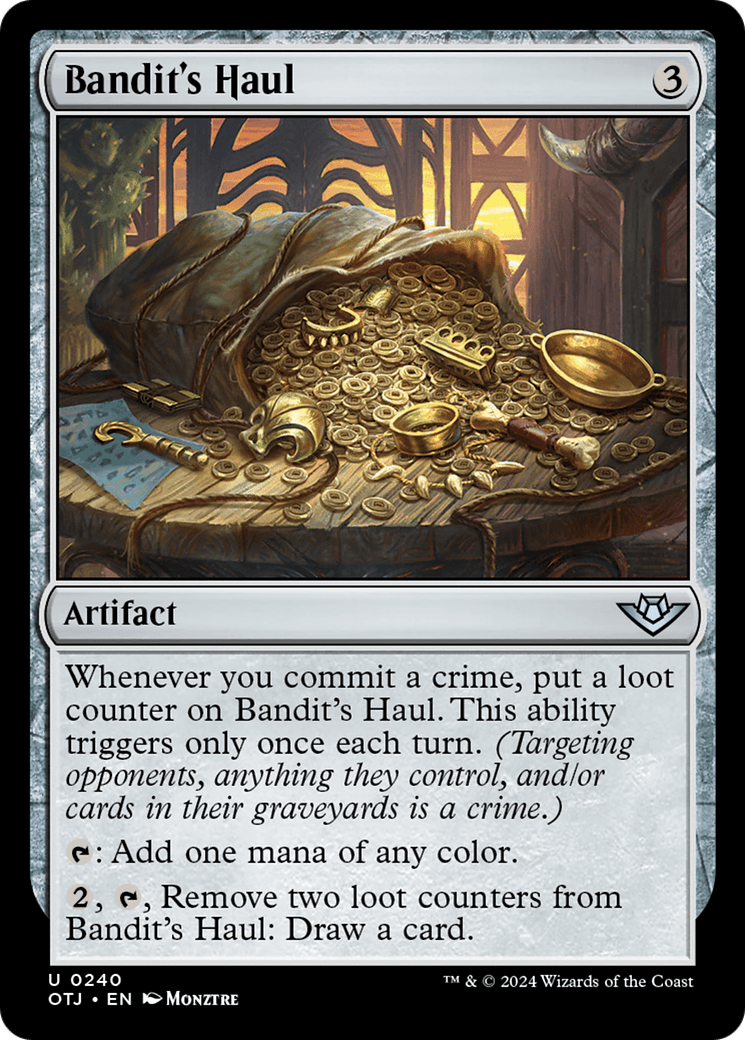
Green
- Green is really fantastic at splashing in OTJ, both due to incidental fixing and creatures that are a little bigger than what your opponent gets to play each turn
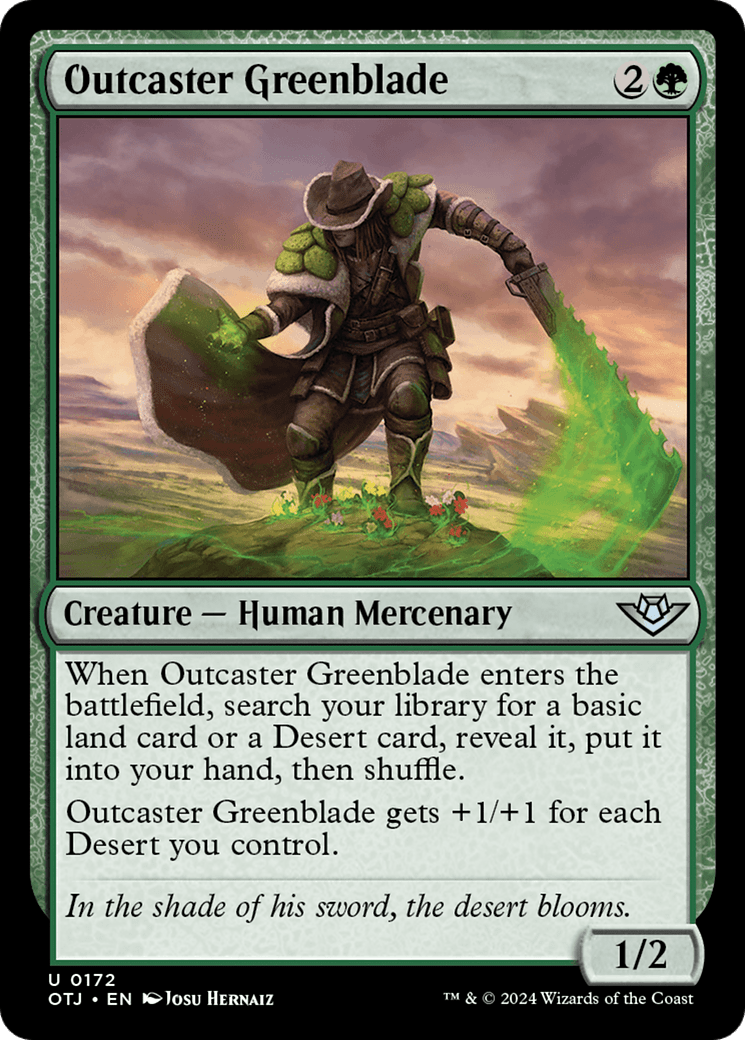
Singular
- Enough cards in the set produce free or extra treasures that you can cram in a single powerful card (ie: Oko, Thief of Crowns), as long as you don’t have to use those treasures elsewhere
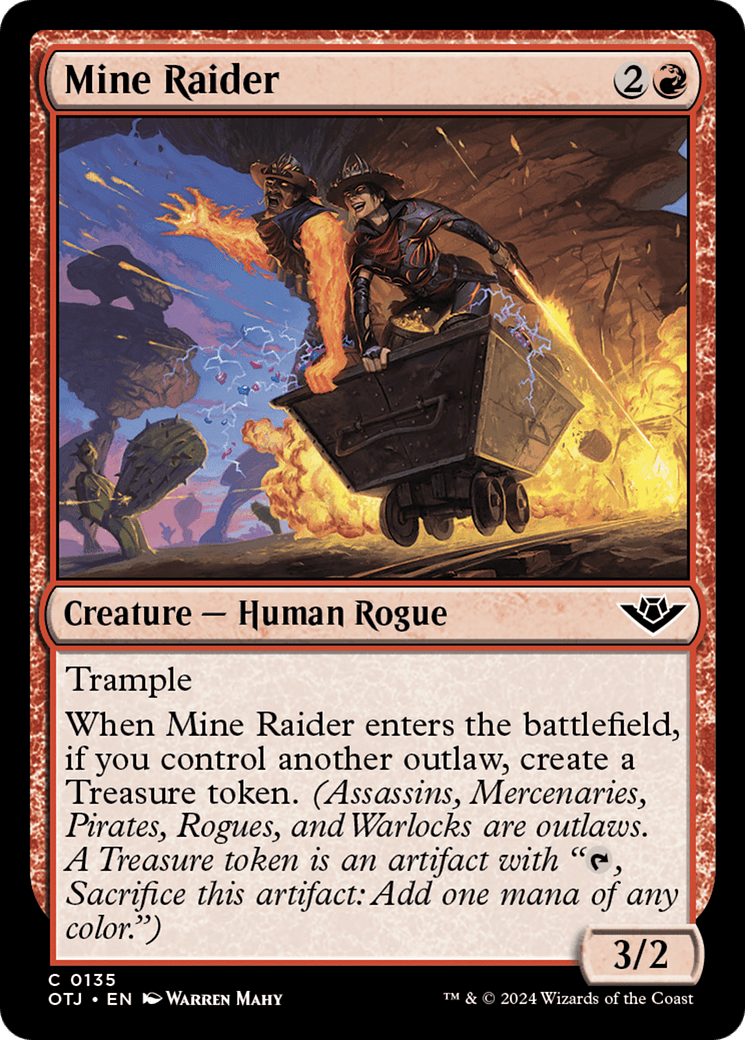
True three-color (or more!)
- There are enough dual lands available at common to be a true 3-color deck, and the power level of individual cards means that an early pick spent on a land isn’t likely to be wasted
- 5-Color Deserts is a powerful and legitimate archetype with the right rares, although it will usually be base-green
20 Takeaways and Tips For Your Draft
Here’s some useful conclusions, as well as a few tips I couldn’t fit into the rest of the article:
1. You need removal, but you can take it a little later due to the amount
2. Flexibility is key early – If you aren’t sure what the pick is, grab something that goes into any deck of a single color
3. Due to the focus on crimes, there are fewer combat tricks than usual. A Combat Trick IS more likely to shrink a creature than grow one
4. Only two instants give 2 toughness. No tricks give 3+ toughness
5. Removal/Reactive early plays are not viable replacements for a creature, because an opponent may just plot a spell and leave you with nothing to do
6. Have a way to close out the game if you’re trying to attack. The incidental lifegain is strong, but so are the fliers, burn spells, and bombs
7. Every color has a method of protecting it’s creatures at Un/Common
8. Try to identify where you want your card advantage to come from- there’s excellent strict card advantage available, but you’ll get more value out of a card that generates value every Crime, Second Spell, or flash spell
9. Golgari is fantastic at recurring specific creatures. Be careful about what you kill against it.
10. Selesnya and Izzet both tend to invest heavily in singular important creatures. Do your best to identify and kill the right ones.
11. Selesnya tends towards removal spells that are situational or disruptible, so it’s possible to protect key creatures by not attacking or removing their fight/bite creature.
12. Rakdos can squeeze in a few non-outlaw creatures, but generally wants as many outlaws as possible
13. Gruul doesn’t really need 4-power creatures if you have mercenary tokens or +1/+1 counters available
14. Boros can be aggressive, but the signpost uncommons and rares all suggest a grinder midrange deck. If you do end up aggressive, try to have a few engines to enable late-game attacks
15. Simic requires a critical mass of cards with plot to get the most out of Doc Aurlock, but otherwise just needs to have a lot of big creatures. Don’t be afraid to splash strong plot cards.
16. The toughnesses of creatures in OTJ are concentrated at 2, 3, and 4
17. The Mythics tend to be strong cards on their own, Rares tend to be strong in specific decks, Uncommons tend to be strongest as specific parts of an engine, and Commons tend to have specific purposes
18. Have a reason to plot- know which spells you want to cast next turn, and how you’re going to get value out of waiting a turn to play them
19. Deadeye Duelist, Sterling Keykeeper, and Blood Hustler are the only cards that commit crimes repeatedly at un/common on demand. Spring Splasher, Shackle Slinger, and Thunder Lasso can do it with some work
20. Take the Fall is the only one-mana cantrip crime
End Step
YIPPIE KAYAK OTHER BUCKETS
(Sorry, I just get so few chances to write that)
Outlaws of Thunder Junction feels so much better to draft than I was expecting, and there’s still so much left to explore. The story is fun, but Wizards has managed to create a Wild West experience independently of the story and they feed into each other exquisitely. Each mechanic creates a tree of decisions I’m ecstatic to climb.
I’ll be drafting this set more than is healthy, and reporting my findings back to you in the form of my card ranking tier list every week. If you have more questions or want to see me tackling this set all the way through Mythic in MTG Arena, stop by any time at Twitch.tv/ScuffleDLux and tune in next week for my 100 Trophy Evaluation article!
Until I see you again, Happy Drafting!

